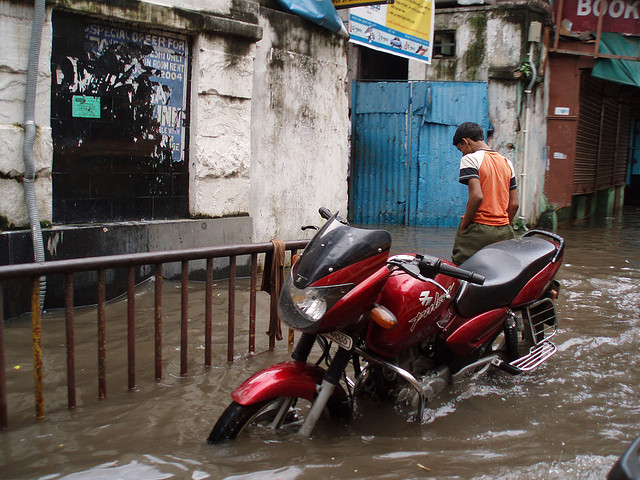Deadly Monsoon Kills Over One Thousand People

A pre-seasonal monsoon that hit the Himalayan state of Uttarakhand in northern Indian this past week killed at least a thousand people and stranded thousands more in villages throughout the state.
With tens of thousands of people still missing from the floods and resulting landslides, the death toll will continue to rise.
The torrential rainfall that lasted for days, flooded the land upstream of the Ganges River and submerged hundreds of cities, towns, and villages. This was the heaviest rainfall Uttarakhand has seen in over 80 years.
The water swallowed everything in its path leaving nothing but piles of debris and total devastation in its wake. Wrecked buildings, smashed car windows and disfigured human bodies floated soullessly through the murky water of the swollen “holy river”.
Large piles of recovered bodies have been gathered in front of local temple waiting to be identified and buried during a mass funeral. According to officials, many of them have already begun decomposing.
The Indian army deployed thousands of military servicemen to aid the rescue operation in the disaster area.
Although more than 28,000 people have been rescued so far according to India’s Ministry of Home Affair,thousands more survivors are waiting for aid, especially in the remote mountainous regions.
Nevertheless, the unpredictable weather continues to deter the rescue process. On Monday, thick fog hazed over skyline forcing the Indian army to postpone the helicopter searches. On Tuesday, a rescue helicopter crashed into the side of a mountain killing five crew members and three civilians.
Weather forecast predicts more rain over the next days, which could further hinder the progression of the rescue operation.
Indian Prime Minister Manmohan Singh is utilizing the national relief fund to offer 200,000 rupees to each of families who have lost loved ones and 50,000 rupees to the injured.
Farmers depend on the annual rain in monsoon season to help nourish the soil so that rice, sugar, cotton and other crops can thrive; yet, this type of excessive rainfall can harm the root of the plants.
Some people blame the unpredictability of this year’s monsoons on the global warming.
Scientists of the Potsdam Institute for Climate Impact Research have found that four to twelve percent change in daily monsoon rainfall in India is expected with 1 degree Celcius of warming.
While an official death toll has not yet been released, hopefully more survivors will be found in the coming days.
Contact Staff Reporter Taiu Kunimoto here.



